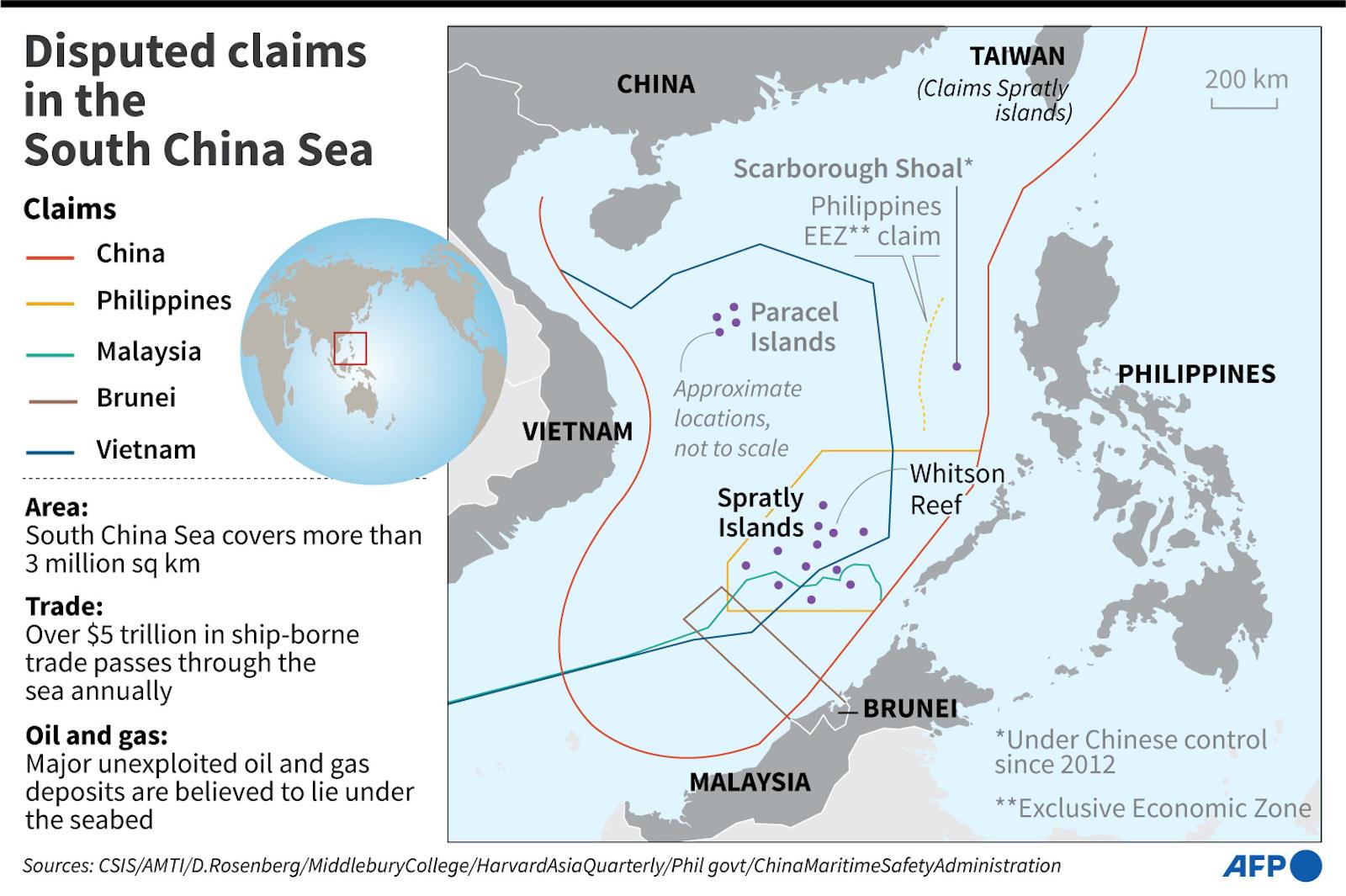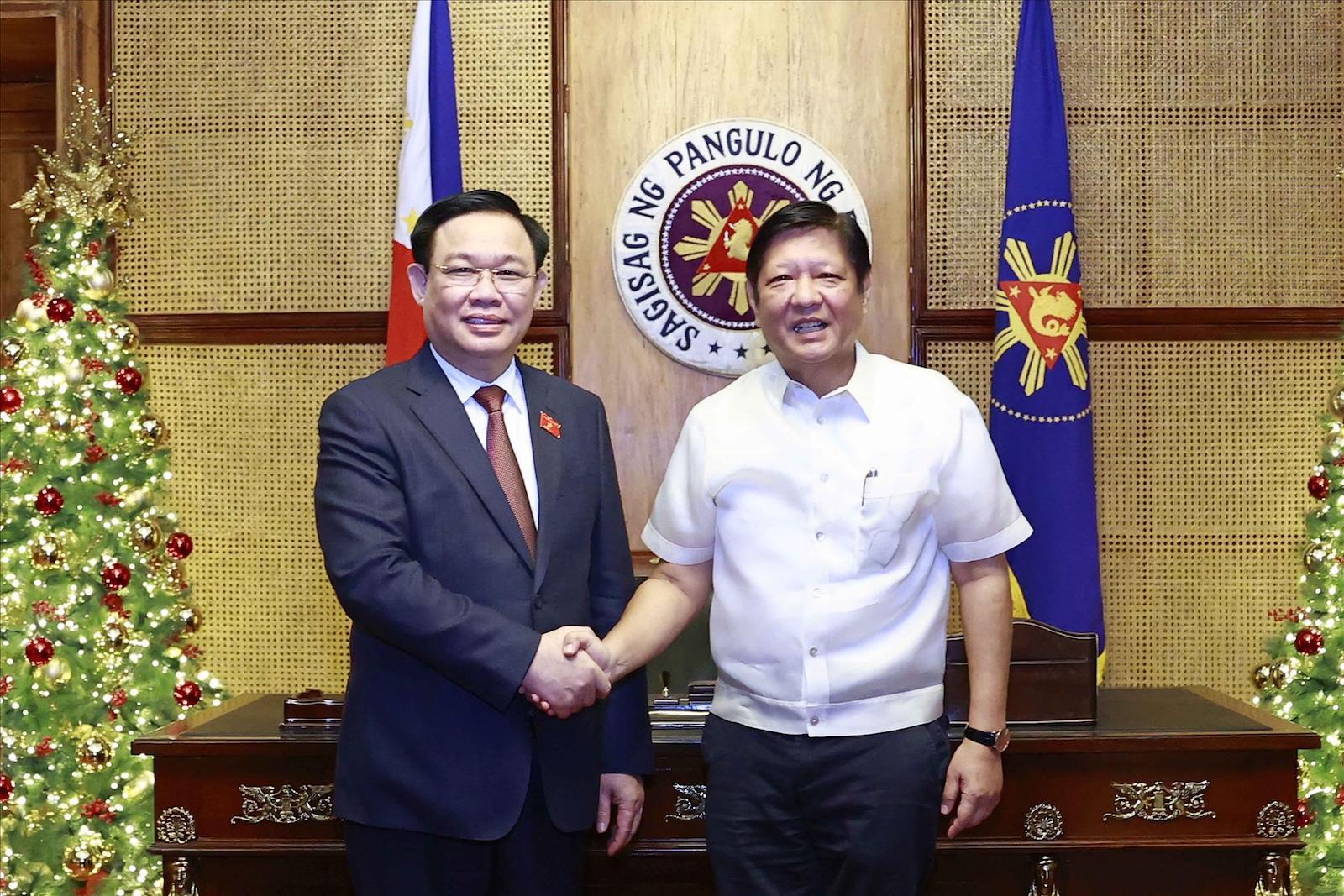(MENAFN- Asia Times) MANILA – Philippine President Ferdinand Marcos Jr has not only revitalized defense ties with traditional Western allies but has also doubled down on strategic cooperation with like-minded regional states pushing back against China's South China Sea assertiveness.
In particular, Vietnam has emerged as a pivotal player in the Philippines' emerging regional strategy to constrain and roll back China's ambitions in the hotly contested and geostrategically crucial maritime area.
Earlier this month, Marcos Jr held his third high-level meeting with a Vietnamese official in his first year in office.
During his meetings with Vietnamese Prime Minister Pham Minh Chinh on the sidelines of the 42nd Association of Southeast Asian Nations (ASEAN) summit and related summits in Labuan Bajo, Indonesia, the two leaders vowed to enhance strategic cooperation with an emphasis on the South China Sea.
Specifically, the Filipino leader advocated for effective agreements that prevent accidental clashes between the two sides, including their fishermen, in the disputed waters.
“I have asked our foreign ministers – our foreign secretary and then the foreign minister of Vietnam – to begin talks so that we can have an agreement so there will be no more problems like this,” Marcos Jr told the media.
The following week, the two countries held a Joint Permanent Working Group on Maritime and Ocean Concerns (JWG-MOC), where they underscored their commitment to jointly advocate for a“substantive” bilateral Code of Conduct (COC) on the South China Sea.
Among those in attendance were senior diplomats as well as Filipino officials from all relevant agencies, including the Philippine Coast Guard, National Security Council, Department of National Defense and Bureau of Fisheries and Aquatic Resources.
With Vietnam broadly supporting the Philippines' landmark arbitration award victory against China at The Hague in 2016, the two sides also agreed“to work together to protect their rights and legitimate interests under the United Nations Convention on the Law of the Sea (UNCLOS) and enhance confidence-building measures between relevant agencies.”
The two ASEAN nations also underscored their commitment to a full range of cooperative activities in the South China Sea, including marine environment protection, search and rescue; fisheries management; oil spill preparedness and response; and marine scientific research.
After years of strategic hiatus under the pro-Beijing Rodrigo Duterte presidency in Manila, the Philippines and Vietnam are once again exploring a potential axis of resistance within ASEAN against China's creeping domination and militarization of adjacent waters.

Chinese President Xi Jinping shows the way to then-Philippine president Rodrigo Duterte in a file photo. Photo: AFP
Since the end of the Cold War, which pitted Manila and Hanoi against each other on ideological lines, the two Southeast Asian nations have repeatedly found themselves on the same side whenever China flexed its muscle in the region.
Under the Fidel Ramos administration (1992-1998), Manila actively advocated for Vietnam's admission into ASEAN in order to facilitate regional integration and more stable geopolitical ties across Southeast Asia, thus setting the tone for warm bilateral relations over the succeeding decades.
When China seized the Philippine-claimed Mischief Reef in 1994, Manila, in tandem with Hanoi, advocated for a robust regional response, which culminated in the 2002 Declaration on the Conduct of Parties in the South China Sea (DOC).
A decade later, the Gloria Arroyo administration (2001-2010) negotiated a trilateral
joint maritime seismic undertaking (jmsu)
agreement with Vietnam and China as part of broader efforts to jointly manage resources in the contested maritime area.
Since most ASEAN members remained
reluctant to confront Beijing, the Philippines and Vietnam often emerged as the hawkish duo within the regional body. In 2010, Vietnam took up the cudgels for ASEAN when it actively advocated for a more robust American strategic presence to counter China's growing assertiveness in the South China Sea.
in response , the Obama administration explicitly identified, for the first time, freedom of navigation in the contested waters as a“national interest” priority.
Just as the Mischief Reef crisis in the mid-1990s brought the two ASEAN nations together, the 2012 Scarborough Shoal crisis provided an additional impetus for stronger strategic cooperation.
The year 2014 marked a new milestone for bilateral ties. In a highly symbolic act, Filipino and Vietnamese naval troops played volleyball and football on one of the contested land features in the South China Sea, signaling through sport a new era of friendship and camaraderie.
Then-Philippine Navy spokesman Lieutenant Commander Gregory Fabic characterized the football diplomacy act as crucial to“eas[ing] up tensions”, which he said could serve as a“model of cooperation for the other navies to emulate.”
That year also saw a
crucial meeting
between then Aquino and then-Vietnamese prime minister Nguyen Tan Dung. Following“productive discussions”, the two sides explored a full range of cooperative initiatives to solidify their emerging new alliance against China.
On one hand, the two sides closely coordinated on the Philippines' decision to take the South China Sea disputes to an international tribunal in The Hague under the UNCLOS, which ultimately ruled that China's expansive claims to the sea are unlawful. Manila repeatedly offered assistance to Hanoi should it decide to join or file a parallel case against the Asian superpower.

Moreover, the two sides also moved closer to establishing regularized joint exercises, annual defense meetings and expanded intelligence-sharing vis-à-vis Chinese maritime activities just as Vietnam stepped up its goodwill naval visits to the Philippines.
Towards the end of the Aquino administration, the two sides drafted a“Joint Statement on the Establishment of a Strategic Partnership between the Republic of the Philippines and the Socialist Republic of Vietnam” to provide a roadmap for long-term strategic cooperation.
The election of pro-Beijing Rodrigo Duterte as Philippine president in 2016, however, derailed fast-advancing Philippine-Vietnam strategic relations.
Not only did the then-new Filipino president largely snub his Vietnamese counterparts, refusing to host a single top leader from Vietnam throughout his six years, but he increasingly and subserviently parroted Beijing's line on the sea disputes.
During his chairmanship of ASEAN in 2017, the Filipino leader repeatedly downplayed the maritime disputes, just as Vietnam urged for a stronger asean stance against beijing's militarization of the disputes.
His top political ally and second foreign secretary, alan peter cayetano , along with prominent Beijing-friendly voices in Manila went a step further by often implying that vietnam is a threat to Philippine interests in the South China Sea.
Bilateral ties hit a new nadir following the deaths of two vietnamese fishermen that same year following a tragic encounter with the Philippine Navy in the South China Sea. But yet another sea crisis between the Philippines and China helped boost Vietnam's standing in Manila.
In 2019, Vietnamese fishermen rescued a dozen Filipino counterparts who were almost drowned following a collision with a suspected Chinese militia vessel at the sea's contested Reed Bank.
The following year, Manila returned the favor by diplomatically backing Hanoi following the sinking of a Vietnamese fishing vessel by Chinese maritime forces in the Paracel group of islands, over which Manila has no claims.
The Philippines' Department of Foreign Affairs (DFA) expressed“deep concern” over the incident and went so far as to state,“We have not stopped and will not stop thanking Vietnam. It is with that in mind that we issue this statement of solidarity.”
Towards the end of Duterte's administration, yet another Filipino fisherman was saved by Vietnam, underscoring increasingly strong bilateral relations.
The election of Marcos Jr, however, has injected new energy into the bilateral relationship, reviving earlier hopes of a de facto alliance between the two ASEAN nations and South China Sea claimants.

Philippine President Ferdinand Marcos Jr and Vietnam National Assembly Chairman Vuong Dinh Hue in the Malacanang Palace, November 2022. Photo: VNA
Last November, the Filipino leader held two high-level talks with Vietnamese counterparts, one with Prime Minister Chinh on the sidelines of the ASEAN summit in Phnom Penh, Cambodia, and another in Manila with Vietnam National Assembly Chairman Vuong Dinh Hue in the Malacanang Palace.
During his first meeting with the Vietnamese leader, the two sides vowed to“boost” cooperation with Vietnam“in a wide range of areas that include food security, climate change, defense and food supply.”
The two sides reiterated the same promise during Marcos' meeting with Vietnam's top legislator in Manila just days later, as the two sides vowed to continue“building upon excellent relationships between our two countries” and mutually supporting each other in global fora.
Follow Richard Javad Heydarian on Twitter at @richeydarian
Like this:Like Loading...